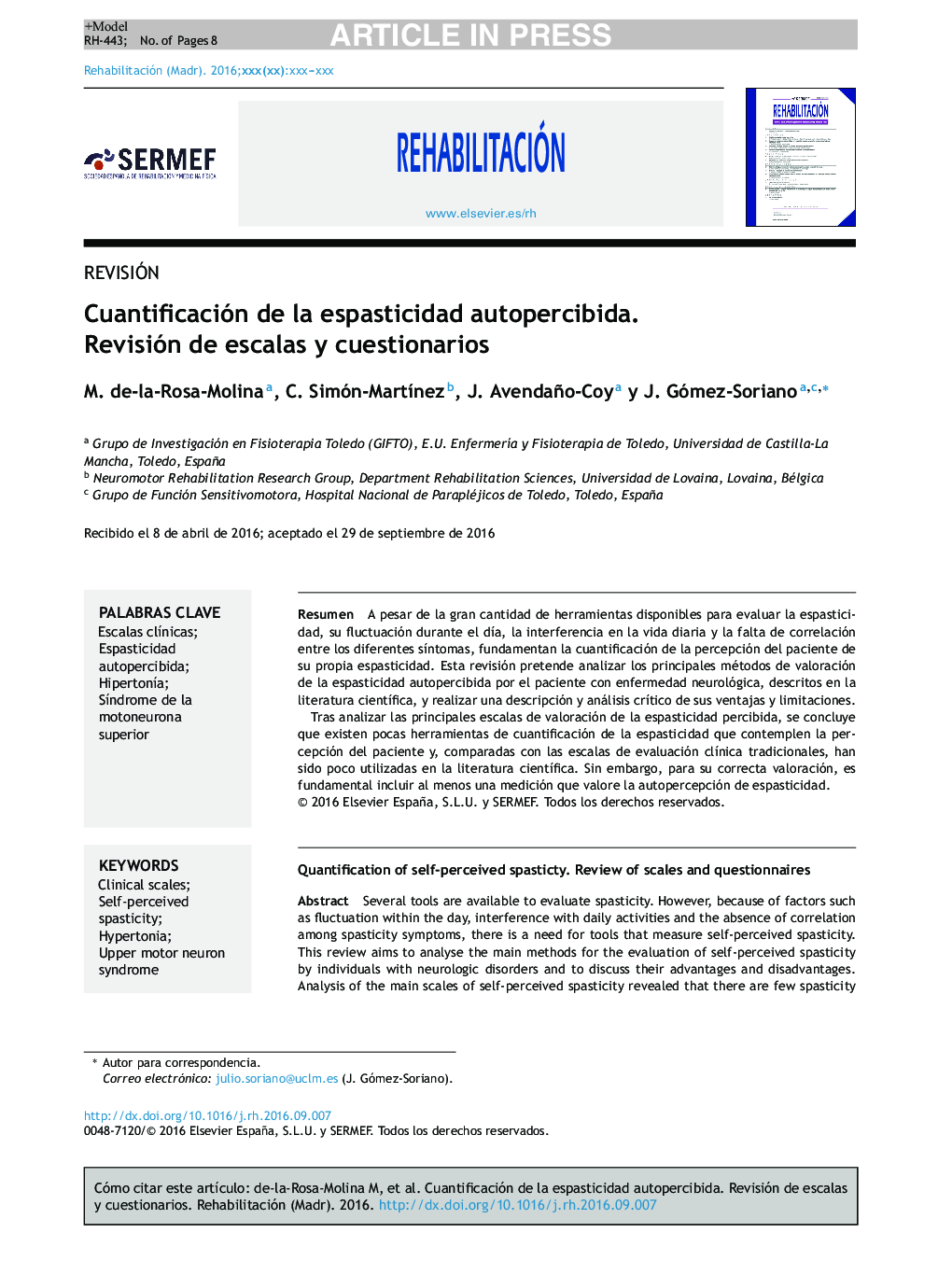| Article ID | Journal | Published Year | Pages | File Type |
|---|---|---|---|---|
| 5711515 | Rehabilitación | 2017 | 8 Pages |
Abstract
Several tools are available to evaluate spasticity. However, because of factors such as fluctuation within the day, interference with daily activities and the absence of correlation among spasticity symptoms, there is a need for tools that measure self-perceived spasticity. This review aims to analyse the main methods for the evaluation of self-perceived spasticity by individuals with neurologic disorders and to discuss their advantages and disadvantages. Analysis of the main scales of self-perceived spasticity revealed that there are few spasticity measurement tools that include the patient's subjective point of view and that very few are used in the scientific literature compared with traditional clinical spasticity scales. However, for a comprehensive evaluation of spasticity, it is crucial to include at least one scale that assesses self-perceived spasticity.
Related Topics
Health Sciences
Medicine and Dentistry
Orthopedics, Sports Medicine and Rehabilitation
Authors
M. de-la-Rosa-Molina, C. Simón-MartÃnez, J. Avendaño-Coy, J. Gómez-Soriano,
